A Case in Point
Some state appellate courts have for years posted on their website not only their written opinions but also the briefs filed by the parties in the appellate court. See, e.g., on the North Dakota Supreme Court’s website, the briefs I filed in 2003 in Kjolsrud v. MKB Management dba Red River Women’s Clinic, a false advertising case based on the scientific evidence linking induced abortion with increased breast cancer risk. This is a good practice, as it allows interested members of the public to readily compare how well the court’s opinions address the arguments made in the parties’ briefs.
The website of the Indiana Supreme Court and the Indiana Court of Appeals, on the other hand, only posts the courts’ opinions, and does not post the parties’ briefs on which those opinions are based.
I’ve copied below the appellate briefs I filed in a case decided today by the Indiana Court of Appeals. You can read and compare the Indiana Court of Appeals’ decision on its website.
APPELLANT’S BRIEF:
STATEMENT OF ISSUES
I. Whether _____ was entitled to discharge under Indiana Rule of Criminal Procedure 4(C).
II. Whether _____ was deprived of his right to a speedy trial under the federal and state constitutions.
STATEMENT OF CASE
An information charging _____ _____ with Child Molesting, a Class C Felony, was filed on July 31, 2009, and _____ was arrested on this charge on August 7, 2009. Appellant’s Appendix (hereinafter “App.”) p. 16, 20. Bond was set at $50,000.00. App. p. 18. _____ requested a bond reduction, and the court ordered the Probation Department to prepare a Bail Review Pre-trial Release Report. App. p. 19. This Report recommended a bond reduction, concluding: “According to the Elkhart County bond schedule, Mr. _____’s bond could be set at $5,000.00. It is presently set at $50,000.00. Mr. _____ reported his bond would need to be reduced to $10,000, in order for him to be able to post bond.” App. p. 22-23. Nevertheless, on September 3, 2009 the court denied _____’s request for a bond reduction and reconfirmed the bond in the amount of $50,000.00. App. p. 24.
At a pre-trial conference held on March 25, 2010, _____’s first trial date was scheduled, for November 8, 2010. Tr. p. 3. On October 28, 2010, the State filed a motion to continue the November 8th trial date due to court congestion. App. p. 30. On November 3, 2010, the court granted, without a hearing, the State’s motion. The order granting the continuance did not “also set the case for trial within a reasonable time,” as directed by Criminal Rule 4, but set a pre-trial conference for December 16, 2010. App. p. 31. Subsequent and similar orders continuing scheduled trial dates “due to court congestion” were entered on January 18, 2011; June 10, 2011; August 15, 2011; January 30, 2012; June 1, 2012; and September 11, 2012. App. p. 55, 70, 71, 101, 126, 128. _____ would not released from jail until May 25, 2012, and would be not tried until February 11, 2013.
On December 2, 2010, _____ filed a Motion For Release From Jail On Own Recognizance, arguing that, counting 154 days (the period of time from October 22, 2009 until March 25, 2010) as chargeable to _____ pursuant to Criminal Rule 4(A), the six-month period within which a defendant must be tried or released from jail on his own recognizance pursuant to Criminal Rule 4(A) had already concluded. App. p. 32.
At the pre-trial conference held on December 16, 2010, the court proposed a trial date of February 28, 2011. Counsel for _____ responded that according to her calculations the last date by which to try _____ within the one-year period allowed by Criminal Rule 4(C) would be January 31, 2011, and that _____ was not acquiescing to a trial date outside the one-year period. The court then set a trial date of January 24, 2011. Tr. p. 41-42.
On December 29, 2010, the State filed a Response opposing _____’s Motion For Release From Jail On Own Recognizance, and on February 22, 2011, the court denied _____’s Motion. App. p. 35, 56.
On February 24, 2011, _____ filed a Motion For Discharge Pursuant To Criminal Rule 4(C), which the court denied on March 8, 2011. App. p. 61, 64.
On September 15, 2011, _____ filed a Motion To Dismiss Based On Violation Of Constitutional Right To Speedy Trial, and orally renewed his motion to be released on his own recognizance. App. p. 72; Tr. p. 67. On September 26, 2011, the State filed a Response opposing _____’s Motion. App. p. 75. On October 31, 2011, the court denied _____’s Motion To Dismiss and oral motion to be released on his own recognizance. App. p. 93.
On April 26, 2012, _____ filed in the Indiana Supreme Court a Petition for Writ of Mandamus and Writ of Prohibition as an Original Action under Cause Number 20S00-1204-OR-239, petitioning the Supreme Court for a writ ordering the trial court to dismiss the charge based on violation of _____’s constitutional right to a speedy trial, or in the alternative ordering the trial court to order _____ released from jail on his own recognizance pending trial. In a published order entered on May 24, 2012, the Indiana Supreme Court determined that _____ had “been ‘detained in jail on a charge, without a trial, for a period in aggregate embracing more than six (6) months,’ as that period is calculated under Criminal Rule 4(A), and that Criminal Rule 4(A) requires his release from jail.” State ex rel. _____ v. Elkhart Superior Court No. 3, 969 N.E.2d 590 (Ind. 2012). The Court denied _____’s request for dismissal based on the alleged violation of his constitutional right, but “without prejudice to Relator raising those issues in an appeal if he is convicted after a trial.” Id. At 591. On May 25, 2012, the trial court ordered _____ released from jail pursuant to the Order of the Indiana Supreme Court. App. p. 125.
On February 5, 2013, _____ filed a Motion For Discharge Based On Denial Of Right To Speedy Trial, which the court denied on February 7, 2013. App. p. 129; Tr. p. 102.
On February 11, 2013, the trial of this case commenced, and _____ was found guilty upon the verdict of the jury on February 12, 2013. On March 19, 2013, the Judgment of Conviction was entered, and _____ was sentenced to the Indiana Department of Correction for a period of six (6) years. App. p. 133. _____ timely filed with the Clerk his Notice of Appeal on April 17, 2013. The trial court clerk served a Notice of Completion of Transcript on July 15, 2013. App. p. 134. Following the inclusion of a supplemental transcript into the Appellate Transcript and an Amended Notice of Filing of Transcript by a court reporter of the trial court, the trial court clerk served a supplemental Notice of Completion of Transcript on August 12, 2012. App. p. 135. This brief is timely filed within thirty days thereafter.
STATEMENT OF FACTS
On March 25, 2010, _____’s first trial date was scheduled, for November 8, 2010, at a pre-trial conference in which the following colloquy occurred:
MR. KINDLEY: Judge, I think we’re just looking for a trial date.
THE COURT: The earliest date I can give you where you have a reasonable expectation of proceeding at trial is November 8th of this year. There are two cases which are older than you client’s, which are ahead of him on that date, but there – he would be third in line, and that would give him a reasonable possibility of proceeding to trial on that date?
Do you want that date?
MR. KINDLEY: Yes, Judge.
THE COURT: Is that acceptable to the state?
MS. SNYDER: It is, your Honor.
THE COURT: May I show that by agreement of the parties?
MS. SNYDER: Yes, by the state, your Honor.
MR. KINDLEY: Yes, Judge.
Tr. p. 3.
On February 22, 2011 the court denied _____’s Motion For Release From Jail On Own Recognizance, based on its finding that the two hundred twenty-two (222) days between March 26, 2010 and November 3, 2010 were attributable to _____ for Criminal Rule 4 purposes because at the pre-trial conference held on March 25, 2010 his counsel had not merely “acquiesced” to the November 8, 2010 trial date but had “affirmatively agreed” to it, even though _____ had only “agreed” to that trial date after the court informed him that the “earliest date I can give you where you have a reasonable expectation of proceeding at trial is November 8th of this year.” App. p. 59-60. This was the rationale argued by the State in its Response opposing _____’s Motion For Release From Jail On Own Recognizance. App. p. 35.
At a pre-trial conference held on July 14, 2011, the following colloquy occurred:
THE COURT: I can give him a first setting on December 5th.
MR. KINDLEY: December 5th?
THE COURT: I can’t, obviously, can’t promise that will remain a first setting, but right now he’s a first setting.
MR. KINDLEY: Okay.
THE COURT: I can do that, or I can give him an earlier setting but only behind other cases and –
MR. KINDLEY: Well, Judge –
THE COURT: — we’ll go through the same exercise again.
MR. KINDLEY: Okay. Well, Judge, it’s also – I do think I do need to make a record here, as far as setting this. We previously filed C.R.4 motions for dismissal, also for release on own recognizance. Apart from the C.R.4 issue, there is the issue of the constitutional right to a speedy trial, which is considered separate; so even if the C.R.4 is followed, if there are continuing resettings, then you can run into a constitutional violation of the right to speedy trial. I –
THE COURT: I’ll take my chances.
MR. KINDLEY: Okay. I do think it’s also an important factor that he has been – he’s already been incarcerated for longer than the advisory sentence. So the effect of the situation is to sort of present a kind of pressure to plead when he’s already been in longer than the advisory sentence. There’s no chance he wouldn’t show up for trial because if he is –
THE COURT: What are you asking me to do?
MR. KINDLEY: I’m asking him to be released on his own recognizance, Judge.
THE COURT: Your request is denied.
Now, do you want this December 5th trial date or not?
MR. KINDLEY: I do, subject to the record I just made, Judge.
THE COURT: Fine. I’ll give you an earlier trial date.
I’m only going to do that if you agree to it. If you don’t agree to it, I’ll set it for an earlier date, and he’ll take his chances as far as older cases. My procedure in this court is to try the oldest case in which the defendant is in custody on a given date and work through the calendar using that criteria. It’s been approved by the Court of Appeals. If you don’t want me – I’ve offered you what I think is going to be a first setting; you don’t want it. You want an earlier one; I’ll give you an earlier one. But you need to understand that the same thing that happened on June 20th is likely to happen with regard to an earlier setting. You choose.
MR. KINDLEY: Well, Judge, my point is, is that whether it’s an earlier setting or whether it’s a later setting, I want to preserve our objection to any setting, based on C.R.4 issues and the constitutional right to a speedy trial. I mean, given the option, subject to that record, given the option, December 5th as a first setting sounds like –
THE COURT: Is that an agreed setting or not?
MR. KINDLEY: Subject to –
THE COURT: Fine. The case is scheduled for trial on August 8th. At this point in time, there are –
MS. SNYDER: Your Honor, I show five plus a speedy trial.
THE COURT: Pardon?
MS. SNYDER: I show five cases ahead of him plus a speedy trial.
THE COURT: I understand.
MR. KINDLEY: Judge, subject to – and I think I have a right to, you know, just make a record as far as my objections go –
THE COURT: You’ve made your record, Counsel. I asked you if that was an agreed setting; you declined to agree to it. That being the case, I’ll give you the earliest possible setting, but I’ll have to continue to follow my rules. I’m going to have to make it August 22.
MS. SNYDER: August 22, Judge?
(Pause)
MR. KINDLEY: August 22?
THE COURT: Correct.
MR. KINDLEY: Okay.
THE COURT: Yes. At this point there are one –
MS. SNYDER: I show three before him, your Honor.
THE COURT: — two, three older cases.
MS. SNYDER: I think I stand corrected at four, Judge, I may have confused you–
THE COURT: Whatever it is, it is.
MS. SNYDER: Yes, sir.
MR. KINDLEY: So that’s August 22nd?
THE COURT: Yes.
MR. KINDLEY: Okay.
Tr. p. 58-61.
At the pre-trial conference held on February 23, 2012, the following colloquy occurred:
THE COURT: We are here today to select a trial date in your case. Your case was scheduled for trial on February 6, 2012. It was continued due to court congestion due to the trial of State vs. Mahamat Outman, an older case in which the defendant was also in custody. We need to select a new trial date for your case. I can give you July 9. And there would be at this point only one case ahead of you on that date. I can’t promise you that it will stay that way, but that’s the situation on July 9.
THE COURT: I can also give you May 7. I think there is one ahead of you on May 7.
OFF THE RECORD
THE COURT: Do the parties want a moment to discuss the trial date?
MS. SNYDER: Do you want a moment to discuss my thoughts as to the priority? Can we have just a moment, your Honor?
THE COURT: Yes, “just a moment.”
OFF THE RECORD
THE COURT: Which of the two that I suggested do you want?
MR. KINDLEY: Well, Judge, I do need to make a record as I have done in this case.
THE COURT: You can answer my question.
MR. KINDLEY: Well, Judge, of the two, July 9th; but I would not –
THE COURT: Pardon.
MR. KINDLEY: Of the two, July 9th, Judge; but I do need to make a record that in our opinion pursuant to motions that we have previously filed, the Defendant’s Constitutional rights to a speedy trial have already been violated. The case should be discharged. We also object to his continued detention pending trial for over two years now. So I need to make that record; but subject to that, of the two dates that have been offered, July 9th is acceptable.
THE COURT: Does the State agree?
MS. SNYDER: Well, not to what he said, but the State agrees to the trial date.
THE COURT: I don’t agree to what he said either. I think it is an frivolous motion; but as far as the trial date of July 9th, does the State agree?
MS. SNYDER: Absolutely, your Honor.
THE COURT: And I am not taking this as a new motion. I think that’s already been litigated. If you want to litigate it again, you will have to file a new motion. Now that may delay your trial date, you understand.
MS. DUERRING: We have already decided, your Honor. There will be no new motions filed.
THE COURT: That’s fine.
Tr. p. 79-81.
On May 15, 2012, the trial judge filed a copy of his signed Affidavit Supplementing the Record in Cause No. 20D03-0907-FC-00018, and forwarded to his counsel in the Original Action pending in the Indiana Supreme Court the Affidavit, which was attached to the judge’s Response to _____’s Petition for Writ of Mandamus and Writ of Prohibition filed in the Original Action, Cause No. 20S00-1204-OR-239. App. p. 9, 102. Paragraph 13 of the Affidavit states:
Mr. _____’s next trial date was February 6, 2012. That trial was continued due to court congestion, specifically the trial of Mahamat A. Outman, whose case was filed under cause number 20D03-1003-FA-11. It should be noted that while Mr. Outman’s case was filed after Mr. _____’s, Mr. Outman was in custody and demanded an early trial pursuant to C.R. 4(B). The Court honored that demand. Please see a portion of the Chronological Case Summary relating to that case which is attached hereto.
App. p. 104.
The portion of the Chronological Case Summary relating to Mr. Outman’s case attached to the Affidavit indicates that Mr. Outman’s case was filed on March 11, 2010, while _____’s case was filed on July 31, 2009. App. p. 117, 122.
SUMMARY OF ARGUMENT
_____ was entitled to discharge under Indiana Rule of Criminal Procedure 4(C) because he was held to answer the criminal charge against him for more than one year, not counting delays caused by him or by legitimate court congestion. In particular, on January 30, 2012, at which time _____ had been held in custody since August 7, 2009, the court on its own motion, outside of any scheduled hearing and without affording _____ any opportunity to object, vacated _____’s February 6, 2012 trial date due to “court congestion.” The order continuing the trial date did not “also set the case for trial within a reasonable time,” as directed by Criminal Rule 4, but set a pre-trial conference for February 23, 2012 for the purpose of selecting a new trial date. App. p. 101. At the pre-trial conference held on February 23, 2012, the court stated: “We are here today to select a trial date in your case. Your case was scheduled for trial on February 6, 2012. It was continued due to court congestion due to the trial of State vs. Mahamat Outman, an older case in which the defendant was also in custody.” Tr. p. 79. However, as the court revealed in its Affidavit Supplementing the Record in Cause No. 20D03-0907-FC-00018, dated May 15, 2012 and attached to the court’s Response to _____’s Petition for Writ of Mandamus filed in the Indiana Supreme Court, Mr. Outman’s case was not in fact “older” than Mr. _____’s but rather “was filed after Mr. _____’s.” App. p. 104. Specifically, Outman’s case was filed on March 11, 2010, while _____’s had been filed on July 31, 2009. App. p. 117. The circumstance that Outman may have filed a motion for an early trial pursuant to Criminal Rule 4(B) within seventy days of _____’s February 6, 2012 trial date did not give his case precedence over _____’s, particularly given that _____’s case was past the one-year deadline imposed by Criminal Rule 4(C) and _____ had not acquiesced to a trial setting outside the Rule 4(C) one-year deadline. Tr. p. 41-42. Therefore, the court’s vacation of _____’s February 6, 2012 trial date due to “court congestion” was clearly erroneous.
_____ was also entitled to discharge because he was deprived of his right to a speedy trial under the federal and state constitutions. The inquiry as to whether a defendant has been denied a speedy trial under the Sixth Amendment and the Indiana Constitution involves balancing a number of factors, particularly: (1) the length of delay; (2) the reason for the delay; (3) the defendant’s assertion of the right to a speedy trial; and (4) any resulting prejudice to the defendant. Danks v. State, 733 N.E.2d 474 (Ind.Ct.App.2000) (citing Barker v. Wingo, 407 U.S. 514, 92 S.Ct. 2182, 33 L.Ed.2d 101 (1972)), trans. denied. First, the length of time _____ spent in jail, and the length of time between his arrest and his trial, were several times greater than, respectively, the six-month and one-year benchmarks indicated by Criminal Rule 4(A) and 4(C), which are supposed to make concrete the right to speedy trial. Second, the reasons for two substantial delays in particular were especially erroneous: specifically, (1) the continuance described in the first paragraph of this Summary of Argument, and (2) the court’s punitive imposition at the pre-trial conference held on July 14, 2011 of an obviously illusory trial date because _____ insisted on making clear for the record that the “agreement” he was being asked to make to a later, but first setting, trial date would not be construed as making any associated delay chargeable to him for speedy trial purposes. Tr. p. 58-61. Furthermore, the State did not have to oppose _____’s repeated motions to be released from jail on his own recognizance, but did so in the first instance by urging on the court a strained interpretation of Indiana Supreme Court precedent, and continued to do so even after the length of _____’s detention as a result of repeated continuances “due to court congestion” began to make a mockery of Rule 4(A). Third, _____ diligently asserted his right to a speedy trial throughout the proceedings below. Fourth, with respect to prejudice, the delay in _____’s prosecution resulted in oppressive pretrial incarceration and undue anxiety, and possibly impaired his defense in ways he cannot prove or even identify. Furthermore, although Indiana courts have placed the burden of demonstrating actual prejudice on the defendant to prove a speedy trial deprivation, a showing of prejudice is unnecessary, and may be presumed, where consideration of the first three Barker factors coalesce in the defendant’s favor, as they do here. Fisher v. State, 933 N.E.2d 526, 530, 532-33 (Ind.Ct.App. 2010).
ARGUMENT
I. _____ was entitled to discharge under Indiana Rule of Criminal Procedure 4(C).
Because the speedy-trial issue presented involves a pure question of law, the appropriate standard of review is de novo. Cundiff v. State, 967 N.E.2d 1026, 1027 (Ind. 2012).
Indiana Criminal Rule 4(C) provides:
No person shall be held on recognizance or otherwise to answer a criminal charge for a period in aggregate embracing more than one year from the date the criminal charge against such defendant is filed, or from the date of his arrest on such charge, whichever is later; except where a continuance was had on his motion, or the delay was caused by his act, or where there was not sufficient time to try him during such period because of congestion of the court calendar; provided, however, that in the last-mentioned circumstance, the prosecuting attorney shall file a timely motion for continuance as under subdivision (A) of this rule. Provided further, that a trial court may take note of congestion or an emergency without the necessity of a motion, and upon so finding may order a continuance. Any continuance granted due to a congested calendar or emergency shall be reduced to an order, which order shall also set the case for trial within a reasonable time. Any defendant so held shall, on motion, be discharged.
The criminal case of Mahamat Outman, which was filed more than seven months after _____’s, was not entitled to the priority the trial court gave Outman when it bumped _____ from his February 6, 2012 trial date in favor of Outman, even if Outman moved for an early trial pursuant to Criminal Rule 4(B).
In Clark v. State, 659 N.E.2d 548, 552 (Ind. 1995), the Indiana Supreme Court stated:
Upon an incarcerated defendant’s request for a speedy trial, Criminal Rule 4(B) requires particularized priority treatment. The rule is not satisfied merely by scheduling such a case for trial at the next date available for criminal cases or for cases generally. Rather, it must be assigned a meaningful trial date within the time prescribed by the rule, if necessary superseding trial dates previously designated for civil cases and even criminal cases in which Criminal Rule 4 deadlines are not imminent.
Id. at 551 (emphasis added).
In Bridwell v. State, 640 N.E.2d 437 (Ind.Ct.App. 1994), the Indiana Court of Appeals stated:
Ideally, the oldest cases should be tried first, those defendants with speedy trial requests given priority, and no case left pending more than one year.
Id. at 439 (emphasis added).
This language in these cases supports the most natural interpretation of Criminal Rule 4: namely, that the priority given to Rule 4(B) requests applies only relative to cases that have not been pending more than one year and in which the Rule 4(C) deadline is not imminent. That is, Rule 4(B) does not trump Rule 4(C). This interpretation of Rule 4(B) is supported by the fact that a motion pursuant to Rule 4(B) is described by the Rule itself as a “Motion for Early Trial” (emphasis added). The notion that a defendant is obliged to file a “Motion for Early Trial,” demanding to be tried within seventy (70) days, after his case has been pending more than one year and he has expressly refused to acquiesce to a trial date outside the Rule 4(C) deadline, in order to let the court and the State know that he is really serious about his right to be tried within one year pursuant to Rule 4(C) and about his speedy trial rights in general, is unsupported by the plain language of Criminal Rule 4 or case law. Such a motion in such circumstances would be superfluous and redundant. In this case, on December 16, 2010 _____ asserted his right pursuant to Criminal Rule 4(C) to be tried no later than January 31, 2011, or in other words, within approximately forty-five (45) days. Tr. p. 41-42. That is, he asserted his right pursuant to Criminal Rule 4(C) to be tried within an even shorter period of time than the seventy (70) days allowed following a motion pursuant to Rule 4(B).
The fact that a criminal defendant does not elect to move for an early trial within seventy (70) days pursuant to Criminal Rule 4(B) does not detract from his right to a trial within one year pursuant to Criminal Rule 4(C), or from his constitutional right to a speedy trial in general. The one year time limit prescribed by Criminal Rule 4(C) is as much a “bright line rule” as the seventy (70) day time limit prescribed by Rule 4(B), and both Rules equally contain the “congested calendar” exception.
II. _____ was deprived of his right to a speedy trial under the federal and state constitutions.
The Indiana Court of Appeals summarized the applicable standard of review and law as follows in Fisher v. State, 933 N.E.2d 526, 530 (Ind.Ct.App. 2010):
In evaluating whether delay has violated a defendant’s constitutional rights, we review issues of fact using a clear error standard and questions of law de novo. State v. Azania, 865 N.E.2d 994 (Ind.2007) (citing United States v. Thomas, 167 F.3d 299 (6th Cir. 1999); United States v. Smith, 94 F.3d 204 (6th Cir.1996); and United States v. Clark, 83 F.3d 1350 (11th Cir.1996)), clarified on reh’g on other grounds 875 N.E.2d 701.
The right of an accused to a speedy trial is guaranteed by the Sixth Amendment to the United States Constitution and by article 1, section 12 of the Indiana Constitution. Clark v. State, 659 N.E.2d 548 (Ind.1995). This “fundamental principle of constitutional law” has long been zealously guarded by our courts. Id. at 551. Thus, to answer the broad question posed by this case: yes, the State has an affirmative duty to pursue prosecution of criminal defendants. Such duty arises out of the criminal defendant’s constitutional right to a speedy trial.
The inquiry as to whether a defendant has been denied a speedy trial under the Sixth Amendment involves balancing a number of factors: (1) the length of delay; (2) the reason for the delay; (3) the defendant’s assertion of the right to a speedy trial; and (4) any resulting prejudice to the defendant. Danks v. State, 733 N.E.2d 474 (Ind.Ct.App.2000) (citing Barker v. Wingo, 407 U.S. 514, 92 S.Ct. 2182, 33 L.Ed.2d 101 (1972)), trans. denied. “[N]one of the four factors … [is] either a necessary or sufficient condition to the finding of a deprivation of the right of speedy trial. Rather, they are related factors and must be considered together with such other circumstances as may be relevant.” Barker v. Wingo, 407 U.S. at 533, 92 S.Ct. 2182. The Barker analysis is triggered where the delay exceeds one year. Danks v. State, 733 N.E.2d 474 (citing Doggett v. United States, 505 U.S. 647, 652 n. 1, 112 S.Ct. 2686, 120 L.Ed.2d 520 (1992)). Indiana has employed the same balancing test to evaluate speedy trial claims pursued under our state constitution. Sturgeon v. State, 683 N.E.2d 612 (Ind.Ct.App.1997), trans. denied.
A. The length of delay
Here, _____ was charged on July 31, 2009 and arrested on this charge on August 7, 2009. He remained in jail on this charge until the Indiana Supreme Court ordered him released from jail on May 24, 2012. He was not tried until February 11, 2013. The trial court attributed all of the delay in this case from November 3, 2010 to “court congestion.” App. p. 60. In Bridwell v. State, 640 N.E.2d 437 (Ind.Ct.App. 1994), which like _____’s case involved repeated continuances of the trial date due to court congestion but unlike _____’s case involved a defendant who’d been released on bond, the Court of Appeals found no violation of Criminal Rule 4(C) but noted: “That is not to say that repeated continuances due to court congestion will never be held to have violated Crim.R. 4(C) or to have transcended constitutional boundaries. There is a point where delay, regardless of the justification, violates the right to a speedy trial.” Id. at 439. In _____’s case, more than twenty-seven months of delay attributed to court congestion elapsed before he was tried, a period of time which by itself (i.e., apart from the more than fourteen months _____ spent in jail prior to November 3, 2010) was more than double the one year period contemplated by Criminal Rule 4(C). He spent more than eighteen of these twenty-seven months in jail, a period of time which by itself (i.e., apart from the more than fourteen months the _____ spent in jail prior to November 3, 2010), was more than triple the six month period contemplated by Criminal Rule 4(A). In this case the court congestion exception has therefore swallowed Criminal Rule 4(C) twice over, and Criminal Rule 4(A) three times over. Cf. Vermillion v. State, 719 N.E.2d 1201, 1206 (Ind. 1999) (noting that many courts, for purposes of the Sixth Amendment right to a speedy trial, find the passage of approximately one year between charging and trial “presumptively prejudicial”). If, as the Court of Appeals stated in Bridwell, supra, “[t]here is a point where delay, regardless of the justification, violates the right to a speedy trial,” _____ respectfully suggests to this Court that that point is definitely reached, if it is not reached sooner, when the period of delay caused by the court congestion exception exceeds, as it has done here, the underlying time periods allowed by the Criminal Rule that that exception is intended to modify (but not render meaningless). _____ also respectfully suggests to this Court that that point is definitely reached when the period of time a defendant has been detained in jail without trial exceeds, as it has done here, the advisory sentence for the crime he is charged with, since by that point the purpose of imposing bail, which is to ensure the presence of the accused when required, is largely vitiated. Lake County Clerk’s Office v. Smith, 766 N.E.2d 707, 709 (Ind. 2002).
B. The reason for the delay
But for the court’s clearly erroneous finding of court congestion relative to the case of Mahamat Outman, as described above, _____ would have been tried on February 6, 2012. Because _____ was not tried until February 11, 2013, this error was the reason for more than a year of delay in bringing _____ to trial. In fact, but for an earlier error by the trial court _____ would have been tried on December 5, 2011. At the July 14, 2011 pre-trial conference, as described above, the trial court initially offered _____ this date as a first setting. In the dialogue that followed counsel for _____ told the court several times that he wanted that trial date, subject to _____’s previous objections based on Criminal Rule 4, _____’s objection to his continued detention pending trial, and _____’s constitutional right to a speedy trial. Because _____ would only “agree” to the December 5, 2011 trial date subject to the record that _____ had made in order to preserve his objections, the court instead gave _____ a different trial date, August 22, 2011, on which three or four cases were ahead of _____’s. Tr. p. 58-61.
_____ had every right to make a record of his objections and to clarify for the record that his “agreement” to the December 5, 2011 trial date was subject to those objections, particularly since in denying _____’s earlier motion for release from jail on his own recognizance the court had relied on his finding that _____ on March 25, 2010 had “agreed” to the initial November 8, 2010 trial date and that because of _____’s “agreement” to that trial date two hundred twenty-two (222) days of delay were attributable to _____ for Criminal Rule 4 purposes. App. p. 60. The court’s demand that _____ “choose” between a first setting trial date or an earlier but illusory trial date is contrary to the fundamental principle that it is the State’s and not the defendant’s obligation to bring the defendant to trial within a constitutionally permissible period of time. The court essentially penalized _____ with an illusory trial date for exercising his right to preserve for the record his objections, and this penal act by itself violated _____’s constitutional right to a speedy trial. Had the court not improperly penalized _____ in this manner, _____’s case would have gone to trial on December 5, 2011. Therefore, this error was the reason for more than fourteen months of delay in bringing _____ to trial.
C. The defendant’s assertion of the right to a speedy trial
_____, who had been detained in jail since August 7, 2009, first asserted his right to be released from jail on his own recognizance pursuant to Criminal Rule 4(A) in a motion filed on December 2, 2010, shortly after the Respondent vacated _____’s initial November 8, 2010 trial date due to court congestion. App. p. 32. At the pre-trial conference held on December 16, 2010, _____ asserted his speedy trial rights by expressly refusing to acquiesce to a trial date outside the one year period established by Criminal Rule 4(C). Tr. p. 41-42. _____ again asked to be released on his own recognizance at a pre-trial conference held on July 14, 2011. Tr. p. 58-61. At that point in time _____ had been detained in jail for almost two years, which, with good-time credit, meant he had already “served” the advisory sentence for the crime he was charged with, even though he had not been convicted of anything and was presumed innocent. _____ had previously filed on February 24, 2011 a motion for discharge pursuant to Criminal Rule 4(C), which the court denied on March 8, 2011.
_____’s counsel stated to the court at the pre-trial conference on July 14, 2011: “Apart from the C.R.4 issue, there is the issue of the constitutional right to a speedy trial, which is considered separate; so even if the C.R.4 is followed, if there are continuing resettings, then you can run into a constitutional violation of the right to speedy trial.” _____ argued to the court that the effect of the his ongoing detention was to put pressure on _____ to plead guilty in order to get out of jail more quickly, and that because he had already “served” so much time there was no chance he wouldn’t show up for trial, because even if convicted he would not face much more time than he had already done. The court flatly denied the _____’s request to be released on his own recognizance. Tr. p. 58-61.
Following this hearing, and after the illusory trial date set by the court at that hearing had been vacated due to court congestion, _____ filed on September 15, 2011 a motion to dismiss based on violation of his constitutional right to a speedy trial, which the court denied on October 31, 2011. App. p. 93. Also on September 15, 2011 _____ again asked the court at the pre-trial conference held on that date to be released on his own recognizance. Tr. p. 67. Finally, at the hearing held on February 23, 2012, shortly before _____ filed his Petition for Writ of Mandamus and Writ of Prohibition in the Indiana Supreme Court, _____ again reiterated his objection to his ongoing detention pending trial, to no avail. Tr. p. 79-81.
D. Any resulting prejudice to the defendant
The United States Supreme Court in Barker v. Wingo, 407 U.S. 514 (1972), explained this factor as follows:
Prejudice, of course, should be assessed in the light of the interests of defendants which the speedy trial right was designed to protect. This Court has identified three such interests: (i) to prevent oppressive pretrial incarceration; (ii) to minimize anxiety and concern of the accused; and (iii) to limit the possibility that the defense will be impaired.
. . .
We have discussed previously the societal disadvantages of lengthy pretrial incarceration, but obviously the disadvantages for the accused who cannot obtain his release are even more serious. The time spent in jail awaiting trial has a detrimental impact on the individual. It often means loss of a job; it disrupts family life; and it enforces idleness. Most jails offer little or no recreational or rehabilitative programs. The time spent in jail is simply dead time. Moreover, if a defendant is locked up, he is hindered in his ability to gather evidence, contact witnesses, or otherwise prepare his defense. Imposing those consequences on anyone who has not yet been convicted is serious. It is especially unfortunate to impose them on those persons who are ultimately found to be innocent.
Id. at 532-33.
Here, the delay in prosecution resulted in oppressive pretrial incarceration and undue anxiety, and possibly impaired _____’s defense in ways _____ cannot prove or even identify. It may be inferred from the Indiana Supreme Court’s issuance of its Writ of Mandamus that _____ had been held in jail in violation of Criminal Rule 4(A) from July 11, 2010 until his ordered release on May 24, 2012, a period of almost two years. App. p. 59. (_____ had been held in jail on the charges in this case since August 7, 2009, and 154 days of delay were chargeable to the Defendant.) Although Indiana courts have placed the burden of demonstrating actual prejudice on the defendant to prove a speedy trial deprivation, a showing of prejudice is unnecessary, and may be presumed, where consideration of the first three Barker factors coalesce in the defendant’s favor, as they do here. Fisher v. State, 933 N.E.2d 526, 530, 532-33 (Ind.Ct.App. 2010)
CONCLUSION
For the reasons set forth above, _____’s conviction should be reversed and the charges against him dismissed.
APPELLANT’S REPLY BRIEF:
SUMMARY OF ARGUMENT
_____ has established a violation of Indiana Criminal Rule 4(C), because, contrary to the argument of the Attorney General, as a matter of law the filing of a motion for an early trial under Criminal Rule 4(B) by another defendant did not give that defendant priority over _____, when _____ had been charged and in custody longer than that defendant, and when _____ had been held to answer the charge for longer than the one year period allowed by Criminal Rule 4(C) and had expressly refused to acquiesce to a trial setting outside that one year period.
_____ has also established a violation of his constitutional right to a speedy trial, because, contrary to the argument of the Attorney General, his early and repeated assertions of his right to a speedy trial under Criminal Rules 4(A) and 4(C) amounted to an assertion of his constitutional right to a speedy trial, the reasons for more than a year of the delay in bringing him to trial were improper, and the almost three years he spent in jail awaiting trial and the almost four years between the date of his arrest and the date of his trial constituted prejudicial and oppressive pretrial incarceration and caused him prejudicial and unnecessary anxiety and concern.
ARGUMENT
I. _____ has established a violation of Indiana Criminal Rule 4(C).
The Attorney General argues that “since _____ had not file [sic] a Criminal Rule 4(B) speedy trial request, it was not improper for the trial court to prioritize the case of the defendant [Mahamat Outman] who had filed a Criminal Rule 4(B) speedy trial request,” even though Outman’s case was filed more than seven months after _____’s, and even though _____ had been detained in jail on his charges for more than one year and had expressly refused to acquiesce to a trial date outside the one year period allowed by Criminal Rule 4(C). Appellee’s Brief p. 10. According to the Attorney General, “if _____ wished to be tried before Outman, he could have filed a motion under Rule 4(B).” Id.
_____ has already explained in his Appellant’s Brief why filing a motion under Rule 4(B) would have been superfluous and redundant in these circumstances, and writes in order to reply to the Attorney General’s reliance on Austin v. State, No. 20S03-1303-CR-158, decided by the Indiana Supreme Court on November 15, 2013. As a preliminary, albeit significant, matter, however, it should be noted that at no time, during the various hearings at which _____ asserted his speedy trial rights, did the trial court inform _____ that it was the trial court’s policy to give priority to defendants who’d filed motions for early trial under 4(B) even over defendants who’d been in custody longer and who were past the one year 4(C) deadline, nor ask _____ when he asserted his speedy trial rights whether he was moving for an early trial under 4(B). To the contrary, as noted by the Attorney General, the trial court informed _____ that it was the court’s practice to “try the oldest case in which the defendant is in custody on a given date and work through the calendar using that criteria.” Appellee’s Brief p. 13. But as reaffirmed by the Indiana Supreme Court in Austin, Indiana’s Criminal Rule 4 “places an affirmative duty on the State to bring the defendant to trial . . . ,” not on the defendant. Austin, slip op. at 11. A trial court’s policy placing an affirmative duty upon the defendant to file a motion for an early trial under 4(B), after he has already expressly refused to acquiesce to a trial date outside the one year 4(C) deadline, to let the court and the State know that he is really serious about his right to a speedy trial, would be as or more improper than the trial court policy described in Alter v. State, 860 N.E.2d 874, 878-79 (Ind.Ct.App. 2007), which “require[ed] defense counsel to contact the court staff at least ten days prior to a trial date to direct the court staff to call a jury, and that any failure to so notify the court would result in a continuance charged to the defense.” The court in Alter noted that, because it was resolving the Criminal Rule 4 issue in favor of the defendant on different grounds, “we find it unnecessary to address the propriety of this rule with respect to Criminal Rule 4.” Id. at 879 fn. 8. Furthermore, defense counsel in Alter presumably had received notice of the trial court’s policy. In _____’s case, by contrast, the trial court maintained silence on its unwritten and already-improper policy, and conspicuously so, since the court did not voice it on any of the occasions when it would have been most natural to do so.
The Attorney General cites Austin for the proposition that “absent extenuating circumstances, a defendant seeking a speedy trial would almost invariably be entitled to a trial setting ahead of any criminal defendant who had not filed a Rule 4 motion.” Austin, slip op. at 16-17. However, the court in Austin also cites the language in Clark v. State, 659 N.E.2d 548 (Ind. 1995) already cited in the Appellant’s Brief, to the effect that a case in which a defendant has filed a motion for an early trial pursuant to Criminal Rule 4(B) “must be assigned a meaningful trial date within the time prescribed by the rule, if necessary superseding trial dates previously designated for civil cases and even criminal cases in which Criminal Rule 4 deadlines are not imminent.” Id. at 551 (emphasis added). See also Bridwell v. State, 640 N.E.2d 437, 439 (Ind.Ct.App. 1994), trans. granted, affirmed in part and vacated in part by Bridwell v. State, 659 N.E.2d 552 (Ind. 1995) (“Ideally, the oldest cases should be tried first, those defendants with speedy trial requests given priority, and no case left pending more than one year.” (Emphasis added.)) Therefore, it appears that the imminence of a Criminal Rule 4(C) deadline should be counted among those “extenuating circumstances” referred to in Austin. This interpretation is confirmed by Austin itself:
Both Criminal Rules 4(A) and 4(C) also contain language providing for continuances due to a congested calendar or emergency, and for then setting the trial within a reasonable time. We see no reason why the analysis for those issues arising under those rules would—or should—be any different than the analysis under Rule 4(B). Thus, our view is that this opinion’s analysis in the context of Criminal Rule 4(B) should apply with equal force to Criminal Rules 4(A) and 4(C).
Austin, slip op. at 12, fn. 8.
Furthermore, Austin notes: “Though commonly referred to as the ‘speedy trial rule,’ and motions filed thereunder as ‘motions for a speedy trial,’ we point out that the rule technically guarantees an ‘early’ trial. Ind. Crim. Rule 4(B).” Id. at 11, fn. 7. This supports _____’s contention that when the one year period allowed by Criminal Rule 4(C) has passed, and the defendant has not acquiesced to a trial date outside the one year deadline, filing a motion for an early trial pursuant to Criminal Rule 4(B) would be superfluous and redundant.
II. _____ has established a violation of his constitutional right to a speedy trial.
A. Length of Delay
The Attorney General concedes that, “since there is no dispute that the delay in this case exceeded a year, _____ clears the first hurdle, and analysis under the remaining Barker factors is required.” Appellee’s Brief p. 11. However, length of delay is not only – or even, as the Attorney General contends, “largely” — a “triggering factor,” triggered by a delay of one year. Rather, the longer the delay, the more likely it becomes that the delay has violated the defendant’s constitutional right to a speedy trial.
B. Assertion of Right
The Attorney General argues that, for purposes of the Barker analysis, neither _____’s motion under Criminal Rule 4(A) to be released on his own recognizance filed on December 2, 2010, nor his refusal at a hearing on December 16, 2010 to acquiesce to a trial date outside the one year period established by Criminal Rule 4(C), nor his motion for discharge pursuant to Criminal Rule 4(C) filed on February 24, 2011, count as assertions of his right to a speedy trial. Appellee’s Brief p. 11. Rather, as the Attorney General would have it, _____ only first asserted his right to a speedy trial for purposes of the Barker analysis when he first used the magical words “constitutional right to a speedy trial” at a July 14, 2011, pretrial conference, if then. Id. at 12. (Indeed, the Attorney General appears to agree with the trial court’s finding that _____’s first assertion of the right to a speedy trial only arose with his Motion to Dismiss Based on Violation of Constitutional Right to Speedy Trial, filed on September 15, 2011. Id.) But, as the Indiana Supreme Court stated in Austin: “The broad goal of Indiana’s Criminal Rule 4 is to provide functionality to a criminal defendant’s fundamental and constitutionally protected right to a speedy trial.” Austin, slip op. at 11. Therefore, when _____ asserted his rights to a speedy trial under Criminal Rules 4(A) and 4(C), he clearly in doing so also asserted his constitutional right to a speedy trial.
The Attorney General argues that prior to _____’s assertion of his “constitutional right to a speedy trial” he had acted inconsistently with the desire for a speedy trial, including by “agreeing to a trial date that was more than seven months later” after new counsel appeared in March of 2010, “which indicated _____ was not interested in a speedy trial.” Appellee’s Brief p. 12. To the contrary, it would be far more accurate to say that _____ had acted inconsistently with the desire for an early trial, as defined by Criminal Rule 4(B), since he did not file a motion for an early trial. When he agreed in March of 2010 to a trial date that was more than seven months later (a date which the trial court informed him was the earliest date on which he had a reasonable chance of proceeding to trial), the trial date he agreed to was still within the one year period permitted by Criminal Rule 4(C). Once he had retained new counsel, therefore, _____ acted perfectly consistently with the desire for a speedy trial.
C. Reasons for Delay
The Attorney General argues it was proper for the trial court, on July 14, 2011, to set _____’s trial for August 22, 2011, a date on which several other cases had already been set for trial and which was therefore an illusory trial date, rather than on December 5, 2011, a date on which _____’s case would have been a first setting, since _____ “would not agree to the December 5, 2011, setting.” Appellee’s Brief p. 13. The Attorney General thereby subscribes to the exact same Catch 22 the trial court presented to _____. Indeed, the Attorney General a page earlier in its Brief faults _____ for “agreeing to a trial date that was more than seven months later” in March of 2010, just as the trial court had counted this seven months against _____ (erroneously, judging from the Indiana Supreme Court’s Writ of Mandamus ordering his release) in denying _____’s motion for release from jail on his own recognizance on the grounds that he had “agreed” to the seven months delay. In fact, it would be more accurate to say that on July 14, 2011 _____ “agreed” to the December 5, 2011 trial date, and even that he requested it, since according to the court it appeared to be the earliest possible setting on which he could realistically hope to go to trial, but that _____ wanted to make clear for the record that his “agreement” to this date would not count against him for purposes of his constitutional right to a speedy trial, especially since the court had just denied his renewed request to be released from jail on his own recognizance pending trial. Again, it was the State’s, and not _____’s, obligation to bring him to trial within a constitutionally permissible period of time. The court did not need _____’s “agreement” in order to schedule his trial as a first setting for December 5, 2011, and its insistence on such “agreement” appeared designed to undermine _____’s assertion of his right to a speedy trial, particularly in light of the court’s earlier denial of his motion to be released on his own recognizance on the grounds that _____ had “agreed” to the first trial date scheduled in his case.
D. Prejudice to the defendant
The Attorney General argues that “_____ fails to identify any specific prejudice to his defense.” Appellee’s Brief p. 14. By this, though, the Attorney General can only mean the third of the three interests which the right to a speedy trial was designed to protect: “(i) to prevent oppressive pretrial incarceration; (ii) to minimize anxiety and concern of the accused; and (iii) to limit the possibility that the defense will be impaired.” Barker v. Wingo, 407 U.S. 514, 532-33 (1972).
The Attorney General incorrectly claims, citing the Appellant’s Brief, that “as he [_____] points out, he was released from jail after less than two years.” Appellee’s Brief p. 14. In fact, what _____ pointed out at the page cited is that he “had been held in jail in violation of Criminal Rule 4(A) from July 11, 2010 until his ordered release on May 24, 2012, a period of almost two years.” Appellant’s Brief p. 17 (emphasis added). _____ had been held in jail since his arrest on August 7, 2009. Id. at 1. Therefore, he had been held in jail for almost three years, well over the advisory sentence for the crime with which he was charged, and almost six times the six month period contemplated by Criminal Rule 4(A).
The Attorney General compares to _____’s case the length of delay and of pretrial incarceration in two cases, Barker v. Wingo, 407 U.S. 514 (1972), and Rivers v. State, 777 N.E.2d 51 (Ind.Ct.App. 2002), in support of its argument that _____ has failed to demonstrate prejudice. However, contrasting the actual facts of these two cases with _____’s actually supports _____’s claim of prejudice.
In Barker:
The difficulty of the task of balancing these factors is illustrated by this case, which we consider to be close. It is clear that the length of delay between arrest and trial—well over five years—was extraordinary. Only seven months of that period can be attributed to a strong excuse . . . . Perhaps some delay would have been permissible under ordinary circumstances . . . but more than four years was too long a period . . . .
Two counterbalancing factors, however, outweigh these deficiencies. The first is that prejudice was minimal. Of course, Barker was prejudiced to some extent by living for over four years under a cloud of suspicion and anxiety. Moreover, although he was released on bond for most of the period, he did spend 10 months in jail before trial. But there is no claim that any of Barker’s witnesses died or otherwise became unavailable owing to the delay. The trial transcript indicates only two very minor lapses of memory—one on the part of a prosecution witness—which were in no way significant to the outcome.
More important than the absence of serious prejudice, is the fact that Barker did not want a speedy trial. . . .
Barker, 407 U.S. at 533-34 (emphasis added).
In Rivers:
Here, the length of the delay between accusation and trial was three and one-half years. This delay is sufficiently lengthy to trigger the Barker analysis. However, an examination of the factors demonstrates that Rivers’ speedy trial rights were not violated. The vast majority of the delay was directly attributable to Rivers’ affirmative acts in seeking continuances, requesting a trial after his co-defendant, and pursuing an interlocutory appeal. Moreover, Rivers failed to assert his speedy trial right until nearly three years after the charges were first filed. This course of action demonstrates that Rivers was not dissatisfied with the course of his trial. In that time, he agreed to testify against his co-defendant and engaged in plea negotiations. His delay of nearly three years in asserting his speedy trial right weighs against a speedy trial violation.
Rivers also fails to demonstrate how he was prejudiced by the delay in this case. Although his plea negotiations were ultimately unsuccessful, the delay in Rivers’ trial is in part attributable to his efforts to avoid one. Moreover, Rivers changed counsel numerous times. Several of the continuances he requested were to enable new counsel sufficient time to review the case. Finally, we also note that Rivers had confessed to his participation in the crime. We find that Rivers has failed to demonstrate prejudice. We therefore conclude that Rivers’ constitutional right to a speedy trial was not violated, and the trial court did not err in denying his motion for discharge.
Rivers, 777 N.E.2d at 56-57 (emphasis added).
In both of these cases, the defendant’s failure to assert his speedy trial rights was found to outweigh what would otherwise likely have been found to constitute a prejudicial length of delay. Even so, in the case of Barker, the U.S. Supreme Court considered it to be a close call, even though Barker had spent only 10 months in jail. _____, by contrast, first asserted his speedy trial rights (on December 2, 2010, when he filed his motion for release from jail on his own recognizance) about 18 months before he was finally released from jail, by order of the Indiana Supreme Court on May 24, 2012, and about 26 months before he was finally tried, on February 11, 2013.
CONCLUSION
For the reasons set forth above, _____’s conviction should be reversed and the charges against him dismissed.

 Follow
Follow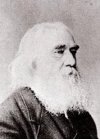
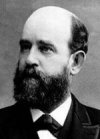
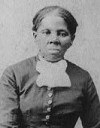



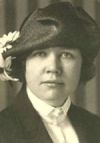
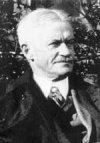
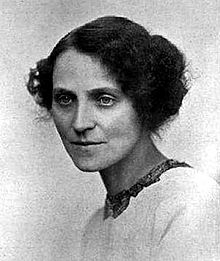


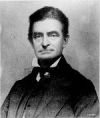
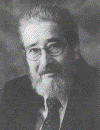
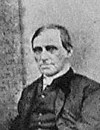
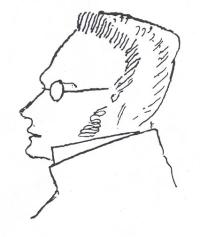

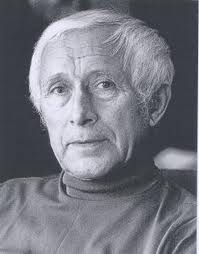
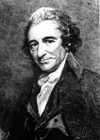

Well, I don’t think they addressed your arguments very well and I think attributing that 222 days of delay to the defendant was outrageously wrong. They didn’t fairly address your point that you had no obligation to make a showing of prejudice. I mean, this was a long time to get to trial.
They did what they wanted to do.
Does he want to do anything about it? Do you?
1My sentiments exactly! Yes, fortunately, we will be petitioning for transfer to the supreme court.
2